
0
+
Google Reviews

0
+
4.5(1950 Ratings)
In today’s rapidly evolving IT landscape, Linux, Cloud Computing, and DevOps are the backbone of modern infrastructure and application delivery. Enterprises are increasingly relying on open-source operating systems, cloudnative platforms, and automation pipelines to drive efficiency, scalability, and innovation. This comprehensive 250-hour training program is meticulously designed to transform learners — whether freshers, working professionals, or career switchers — into job-ready Linux System Administrators, AWS Cloud Engineers, and DevOps Practitioners. Over a span of 6 months, this instructor-led, practical, and project-driven course delivers hands-on experience with industry-standard tools, real-world deployment scenarios, and job-oriented use cases that reflect current demands in production-grade environments.


Curriculum Designed by Experts
Red Hat Linux Training: Basic to Advanced (100 Hours)
Suitable for: Beginners to Intermediate System Admins, DevOps Aspirants, Cloud Engineers
Versions: RHEL 8 & 9
Delivery Mode: Classroom / Online / Self-paced + Labs
Certification Aligned: RHCSA + RHCE + Real-Time System Admin Skills
Module 1: Introduction & Installation
• Linux History & Architecture
• CLI vs GUI
• RHEL Installation (manual & automated)
• Virtualization tools (VirtualBox, KVM)
Module 2: Filesystem Navigation & File Handling
• File system hierarchy (FHS)
• Important directories: /etc, /var, /home, /proc, /tmp
• File manipulation: cp, mv, rm, touch, cat, vim, nano
• Wildcards, find, locate, grep, cut, sort
Module 3: User and Group Management
• Creating, modifying, deleting users
• /etc/passwd, /etc/shadow, /etc/group
• User password policies
• sudo, sudoers file with visudo
• File permissions, ACLs, SUID/SGID/Sticky bit
Module 4: Package Management
• RPM and YUM/DNF
• Repositories: local and remote
• Installing, removing, updating packages
• Managing package groups
Module 5: File System & Storage Management
• Partitioning: fdisk, parted
• Mounting filesystems: mount, umount
• LVM Concepts: PV, VG, LV
• Filesystem types: ext4, XFS
• File system repair: fsck
• Automounting using /etc/fstab
Module 6: Process & Job Scheduling
• Managing processes: ps, top, htop, kill, nice
• Background and foreground jobs
• cron, crontab, at, systemd timers
Module 7: Networking Basics
• ip, nmcli, hostnamectl
• Setting static IPs
• DNS client configuration
• Testing: ping, netstat, ss, traceroute, curl
Module 8: Logging & Boot Management
• System logs: journalctl, /var/log/*
• systemd & targets
• GRUB2 bootloader
• Rescue mode and emergency mode
Module 9: SELinux & Firewall
• SELinux Modes
• Tools: getenforce, setenforce, semanage, restorecon
• Firewalld zones, services, ports
• firewall-cmd usage
RHCSA Practicals & Mini Project
• Install and configure a Linux server
• Setup users, partitions, and firewall
• Automate backups and periodic jobs
• RHCSA exam simulations
Module 1: Bash Shell Scripting
• Variables, operators
• Conditional statements: if, case
• Loops: for, while, until
• Functions and command substitution
• Automating system tasks
Module 2: Network Services Configuration
• SSH Server configuration (key-based auth, chroot)
• Apache Web Server (httpd) setup
• FTP Server (vsftpd)
• NFS & AutoFS
• Samba (Windows file sharing)
• DNS Server (BIND)
• DHCP server (ISC)
Module 3: Centralized Authentication (Optional)
• Introduction to LDAP/IPA integration
• Configure SSSD and Kerberos client
Module 4: Mail Server (Optional)
• Postfix MTA configuration basics
• Mail logs and troubleshooting
Module 5: NTP, Chrony & Time Sync
• Configure NTP client and server
• Chrony configuration and status
Module 6: Performance & System Monitoring
• Resource monitoring: top, iotop, vmstat, iostat
• Disk usage: df, du
• Troubleshooting tools: strace, lsof, tcpdump
Module 7: System Security & Auditing
• TCP wrappers
• Security auditing using aide
• Configure auditing via auditd
Module 1: Introduction to Ansible
• Ansible architecture and installation
• Inventory files, modules, ad-hoc commands
Module 2: Ansible Playbooks
• YAML syntax, playbook structure
• Variables, facts, conditionals
• Loops and handlers
Module 3: Roles and Automation
• Role directory structure
• Templates with Jinja2
• Automating user, service, and firewall tasks
Module 4: RHCE Exam-Based Playbook Scenarios
• Automate Apache deployment
• Configure NTP, SSH, and services with Ansible
• Advanced tasks (handlers, notify, tags)
Capstone Projects (End-to-End)
Project 1: Setup and Harden a Web Server
• Install Apache + Firewall + SELinux
• Automate user creation and backup with Bash scripts
Project 2: NFS + Samba + FTP Integration
• Multi-user file sharing setup with permissions
Project 3: LVM Automation with Ansible
• Create, mount, and manage LVM volumes via playbooks
Certifications This Training Prepares You For:
• RHCSA (EX200)
• RHCE (EX294)
• Optional: Entry-level Linux+ or LFCS
Categories: Server Provisioning, Networking, Storage, Security, Performance, Disaster
Recovery, Monitoring
A. Server Provisioning & Boot Scenarios
1. Provision 100+ Bare Metal Servers with Kickstart
o Automate RHEL installations using PXE boot and Kickstart.
2. Change Boot Target from GUI to CLI in Production Server
o Recover from high resource usage due to GNOME GUI.
3. Rescue Unbootable Server due to Corrupt /etc/fstab
o Boot using ISO, mount partitions, and fix fstab manually.
4. Extend / Root Partition Live in LVM
o Use LVM tools to resize root volume without downtime.
5. Convert Static IP to DHCP on Multiple Servers via Script
o Push changes using Bash/Ansible and verify connectivity.
B. Network Configuration & Troubleshooting
6. Configure Bonding on Dual NICs for Redundancy
o Implement active-backup mode bonding in a 2-port server.
7. Set Up VLAN Tagged Interfaces for Isolated Traffic
o Configure VLAN interfaces and routing rules per segment.
8. Fix Intermittent Network Drop due to NIC Driver Issues
o Diagnose using dmesg, update driver, blacklist old module.
9. Setup Gatewayless Routing for Multi-NIC Servers
o Assign routes per interface using /etc/sysconfig/network-scripts/.
C. Storage & File System Tasks
10. Configure NFS Server with Secure Access for Application Nodes
o Restrict access with IP ranges, root_squash, SELinux.
11. Mount iSCSI Target from SAN and Format Using LVM
o Discover LUNs, format with XFS and integrate into /data.
12.Recover Deleted Files from Unmounted Disk Using extundelete
o Perform safe recovery on ext3/ext4 partitions.
13.Resize Online XFS Partition with Downtime-Free Expansion
o Extend LVM, use xfs_growfs without rebooting.
D. Security & Compliance Tasks
14. Harden SSH Access Across 100+ Servers
o Disable root login, change port, enforce key-based auth.
15. Configure Centralized Logging Using Rsyslog Server
o Aggregate logs to central box for audit compliance.
16.Automate Daily Security Patch Installation via yum-cron
o Enable unattended upgrades and reporting.
17. Configure and Troubleshoot SELinux Blocking Apache Access
o Use audit2allow and semanage fcontext for custom paths.
E. Process & Service-Level Troubleshooting
18. Investigate Sudden Apache Downtime
o Analyze logs, systemctl status, verify port conflict.
19. Diagnose High CPU Load from Zombie Processes
o Identify using ps, top, and kill parent PIDs.
20. Fix Server Freezing due to Memory Leaks in Custom App
o Use free, vmstat, valgrind, and sar to analyze.
21.Restart Hung NFS Mount without Reboot
o Kill stale NFS processes and remount manually.
F. Performance & Monitoring
22. Configure Performance Tuning with tuned Profiles
o Use tuned-adm for virtual/throughput-latency profiles.
23. Implement I/O Monitoring for Disks via iostat and blktrace
o Create reports and alerts for high disk latency.
24. Configure SNMP Monitoring Agent for NOC Dashboards
o Secure SNMPv3 setup with allowed IP ranges.
25. Set Up Email Alerts on Disk Space & Memory Thresholds
o Use cron + mailx + df or shell scripts.
| Scenario | Challenge / Solution |
|---|---|
| Clone & configure 10 servers with specific user, network, and firewall rules | Scripting + CLI Configuration |
| One NIC drops intermittently on heavy load | NIC driver tuning, interrupt affinity |
| Restore server boot with broken GRUB | Rescue ISO, chroot, grub2-install |
Resize and remount /opt with zero downtime | LVM & live filesystem expansion |
| Configure server to auto reboot on kernel panic | sysctl + GRUB parameter |
| Auto restart Apache if it crashes | systemd unit + watchdog |
| Identify failing NFS mounts affecting app startup | Logs, mount settings, fstab |
Encrypt /data with LUKS and auto-unlock via keyfile | Secure keyfile integration |
Block all IPs except internal subnets using firewalld | firewalld + zones |
| Perform kernel upgrade with fallback option | Keep old kernels, grub set-default |
AWS Cloud Administration – Basic to Advanced Training (80–100 Hours)
Mode: Classroom / Online / Self-paced
Format: Theory + Labs + Assignments + Projects
Tools Covered: AWS CLI, IAM, EC2, VPC, S3, CloudWatch, CloudTrail, Route 53, RDS, Backup, Lambda, etc.
Module 1: Introduction to Cloud & AWS (4 Hours)
• Cloud computing concepts: IaaS, PaaS, SaaS
• AWS global infrastructure: Regions, AZs, Edge locations
• Shared responsibility model
• Pricing models: On-demand, Reserved, Spot
Module 2: Identity & Access Management (IAM) (6 Hours)
• IAM users, groups, and roles
• IAM policies (JSON policy structure)
• MFA setup and best practices
• IAM roles for EC2, Lambda
• Resource access delegation
Assignment:
• Create IAM policy to restrict S3 and EC2 access.
• Assign role to EC2 instance to access S3 bucket.
Module 3: Amazon EC2 & AMIs (12 Hours)
• Launching EC2 instances (Linux & Windows)
• Key pair generation, SSH & RDP
• Security groups and NACLs
• AMI creation and backup
• EC2 Instance Connect, SSM usage
• Instance types (T, M, C series)
Assignment:
• Launch 2-tier app (web & DB) on EC2.
• Backup & restore an EC2 with AMI.
Module 4: Amazon S3 & Storage Services (8 Hours)
• S3 bucket creation and management
• Object lifecycle policies and versioning
• Bucket policies vs IAM policies
• Storage classes (Standard, IA, Glacier)
• Multipart upload, S3 Transfer Acceleration
• EBS vs EFS vs S3 comparison
Assignment:
• Host a static website on S3 with custom domain.
• Configure lifecycle policy to move objects to Glacier.
Module 5: Networking (VPC, Subnets, Route 53) (10 Hours)
• VPC creation and CIDR planning
• Public and private subnets
• Internet Gateway & NAT Gateway
• Elastic IPs and route tables
• Security groups vs NACLs
• DNS with Route 53: A, CNAME, Alias records
Assignment:
• Launch a VPC with 2-tier architecture.
• Configure Route 53 with custom domain and failover policy.
Module 6: Monitoring, Logs & Audit (8 Hours
• AWS CloudWatch (metrics, logs, dashboards, alarms)
• CloudTrail for auditing API activity
• EC2 log monitoring
• Custom metrics and log groups
Assignment:
• Create CPU alarm for EC2.
• Monitor login activities via CloudTrail.
Module 7: Security, Compliance & Backup (6 Hours)
• AWS KMS and encryption at rest/in-transit
• AWS Backup service
• Security Hub, GuardDuty basics
• Inspector, WAF, Shield (overview)
Assignment:
• Enable GuardDuty and investigate alerts.
• Schedule backup jobs using AWS Backup.
Module 8: RDS & Databases (6 Hours)
• RDS instance launch (MySQL, PostgreSQL)
• Subnet group and parameter group
• Automated backups and snapshots
• Multi-AZ vs Read Replicas
• Amazon Aurora basics
Assignment:
• Deploy and connect to RDS from EC2.
• Restore RDS from snapshot.
Module 9: Automation & Management (10 Hours)
• AWS CLI and SDK intro
• EC2 automation with User Data scripts
• AWS Systems Manager (SSM): Patch Manager, Run Command
• S3 and EC2 automation with Lambda
• CloudFormation intro (infrastructure as code)
Assignment:
• Write CLI script to create EC2 and attach volume.
• Use SSM to patch multiple EC2s.
Module 10: High Availability & Scalability (6 Hours)
• Elastic Load Balancer (ALB, NLB)
• Auto Scaling Groups
• Launch templates and health checks
• Multi-AZ setup for EC2 & RDS
Assignment:
• Create HA web tier with ALB + ASG.
• Configure scaling policy based on CPU.
Module 11: Migration, Cost & Troubleshooting (6 Hours)
• AWS Migration Hub and Application Discovery
• AWS Cost Explorer and budgets
• Trusted Advisor usage
• Billing alarms and optimization strategies
• Troubleshooting EC2, S3, VPC, IAM issues
Capstone Projects (Choose 1 or more)
Project 1: Deploy a Secure 3-Tier Web App on AWS
• EC2 (web), RDS (DB), S3 (static files), ALB, ASG, Route 53
Project 2: Backup & Disaster Recovery Solution
• Use AWS Backup, AMIs, and S3 Glacier for long-term backup
Project 3: Monitoring & Alerting System
• Setup CloudWatch dashboards and alerts for web and DB layers
Training Deliverables
• 100+ Hands-on Labs & Assignments
• 30+ Real-Time Scenarios
• 20+ Troubleshooting Exercises
• Resume Projects + Certification Guidance
• AWS Free Tier Setup Support
| Level | Title | Experience | Focus |
|---|---|---|---|
| L1 | Cloud Support Associate | 0–1 years | Basic monitoring, support ticket handling |
| L2 | Cloud Support Engineer | 2–4 years | Configuration, automation, issue resolution |
| L3 | Cloud Architect / Sr. Admin | 5+ years | Design, performance tuning, cost optimization |
Monitoring & First-Level Support:
• Monitor AWS services (EC2, RDS, ALB, etc.) via CloudWatch.
• Basic health checks for servers and applications.
• Respond to support tickets and alerts (CPU, disk, memory).
• Restart instances or services when needed.
Routine Operational Tasks:
• Add/remove IAM users with pre-approved policies.
• Assign EC2 security groups as per standard templates.
• Attach/detach EBS volumes.
• Snapshot EC2 instances on schedule.
Documentation & SOPs:
• Follow SOPs to execute AWS CLI commands or AWS Console tasks.
• Maintain ticket documentation and logs.
• Escalate issues to L2/L3 based on SLA.
Tools Used: AWS Console, AWS CLI, CloudWatch, ITSM tools (ServiceNow, Jira), Putty/Mobaxterm
Infrastructure Management:
• Design and implement VPC with public/private subnets.
• Configure NAT Gateways, Route Tables, IGWs.
• Automate EC2 provisioning with User Data and Launch Templates.
Security & Access:
• Design and enforce IAM policies for teams.
• Implement and audit MFA, IAM Roles for services (e.g., Lambda, EC2).
• Enforce S3 bucket policies, block public access, configure encryption.
Networking & Troubleshooting:
• Troubleshoot VPC connectivity issues, security group/NACL conflicts.
• Configure VPN/Direct Connect interfaces.
• Resolve DNS/Routing issues with Route 53 and EC2.
Backup & Recovery:
• Implement backup strategies with AWS Backup.
• Automate snapshot rotation for EC2/EBS.
• Restore instances or volumes from snapshots.
Monitoring & Logging:
• Create CloudWatch Alarms and dashboards.
• Setup custom log monitoring with CloudWatch Logs Insights.
• Review CloudTrail logs for unusual activities.
Automation & Scripting:
• Write AWS CLI/Bash/Python scripts for tasks (start/stop EC2, backup
automation).
• Use AWS Systems Manager (SSM) for patching and Run Commands.
Tools Used: AWS CLI, CloudFormation (basic), SSM, Lambda (trigger-based),Bash/Python, Git
Architecture & Design:
• Design scalable, HA cloud architectures with Auto Scaling, Multi-AZ
deployments.
• Create DR strategies using cross-region replication, Route 53 failover.
• Architect 3-tier or microservices-based cloud-native applications.
Infrastructure as Code (IaC):
• Design & deploy AWS CloudFormation, Terraform templates.
• Create reusable modules for EC2, VPC, RDS, ALB, etc.
DevOps Integration:
• Work with DevOps teams to integrate CI/CD pipelines (CodePipeline, Jenkins).
• Manage container orchestration (ECS, EKS).
• Implement GitOps and ChatOps practices.
Security & Governance:
• Enforce organization-wide guardrails via AWS Organizations and SCPs.
• Integrate AWS Config, Security Hub, and GuardDuty for continuous compliance.
• Manage IAM federation with AD/Azure AD or Okta (SSO).
Cost Optimization & Billing:
• Use AWS Cost Explorer and Trusted Advisor for right-sizing.
• Set budgets and alerts.
• Optimize Reserved Instances and Spot usage strategies.
Incident Management & RCA:
• Lead P1 incident resolution and RCA documentation.
• Work closely with AWS Support and escalate SRs.
Tools Used: Terraform, CloudFormation, IAM Federation, Security Hub, Cost Explorer, Config Rules, AWS Well-Architected Tool
| Task Domain | L1 | L2 | L3 |
|---|---|---|---|
| Monitoring | Basic checks, alerts | Setup alarms, log groups | Custom dashboards, anomaly detection |
| EC2/Infrastructure | Launch, stop, reboot | Configure ASG, ELB, backups | Architect HA, Multi-AZ/region apps |
| IAM | Create users, roles | Write/manage IAM policies | IAM Federation, SCP |
| Networking | Security groups | VPC/Subnets, VPN config | Multi-region, Direct Connect |
| Storage (S3/EBS/EFS) | Upload/download | Lifecycle policies, encryption | Storage tiering, cross-region replication |
| Automation | Manual execution | AWS CLI scripting, SSM | Terraform, CloudFormation |
| Backup & DR | Snapshots, restore | Backup policies, automation | DR design, cross-region failover |
| Compliance/Security | Basic patching | GuardDuty, Config rules | Org-wide guardrails, Security Hub |
| Cost Management | NA | Budget alerts | Cost optimization, reserved planning |
Tools covered
Git, GitHub / GitLab / Bitbucket ,Jenkins, Docker, Kubernetes, HashiCorp Vault, ELK
Stack , Argo CD ,Jira ,Nexus, Helm ,Ansible, Terraform, Vault, Prometheus, Grafana,
Azure DevOps / AWS Code Pipeline,ChatOps
Syllabus overview
DevOps Master Training Syllabus designed for System Administrators, DevOps Engineers, Cloud Engineers, and Platform Engineers, covering 20+ DevOps tools with hands-on labs and real-time projects.
1. Version Control & Source Code Management
Git
• Basics: init, clone, commit, push/pull, branches, merge
• Conflict resolution, cherry-pick, rebase
• Git hooks and workflows (Git Flow, Trunk-based)
GitHub / GitLab / Bitbucket
• Repo management, Webhooks
• Issues, Projects, Actions/Pipelines
• CI/CD integration
Lab: Set up Git workflow, merge conflicts
Project: Configure GitHub/GitLab for team collaboration with CI/CD triggers
2. Continuous Integration/Delivery
Jenkins
• Installation, master-agent architecture
• Freestyle & pipeline jobs (Scripted/Declarative)
• Jenkinsfile, parameterized builds
• Integration with Git, Docker, Nexus, Ansible
Lab: Jenkins CI pipeline to build/test Java app
Project: Jenkins → Build Docker image → Push to Nexus → Deploy with Ansible
3. Containerization & Orchestration
Docker
• Dockerfile, images, containers, volumes, networking
• Compose and multi-container applications
Kubernetes
• Pods, Deployments, Services, ConfigMaps, Secrets
• Helm, RBAC, Ingress, Namespaces, Volumes
• Kubernetes Dashboard and K9s
Lab: Containerize app, push to DockerHub, deploy via kubectl
Project: Full CI/CD with Jenkins → Docker → K8s via Helm
4. GitOps and Deployment Automation
Argo CD
• GitOps architecture, application deployment
• Sync, rollback, hooks, SSO/RBAC
Helm
• Install charts, chart structure, upgrades, values
Lab: Argo CD auto-sync with Git-managed K8s manifests
Project: Deploy Helm chart apps with Argo CD GitOps model
5. Secrets & Configuration Management
HashiCorp Vault
• Secrets engines, auth methods, policies, audit logs
Ansible
• Inventory, playbooks, roles, vault, modules
• Cloud provisioning, app config, Docker/K8s automation
Lab: Use Vault to provide secrets in Jenkins & Ansible
Project: Ansible playbook to configure a 3-tier architecture, secrets via Vault
6. Monitoring & Logging
ELK Stack
• Elasticsearch, Logstash, Kibana basics
• Centralized log analysis from K8s, Jenkins, Docker
Prometheus & Grafana
• Node exporter, K8s metrics, custom dashboards, alerts
Lab: Configure Filebeat → Logstash → Kibana
Project: Monitor app metrics in Prometheus; visualize with Grafana
7. Artifact Management
Nexus Repository Manager
• Hosted, proxy, group repositories for Maven, Docker, Helm
• Role-based access
Lab: Upload Docker/Maven artifact; configure pull in Jenkins
Project: Full CI/CD flow with Nexus as artifact store
8. Agile and Ticketing Tools
Jira
• Projects, Epics, Sprints, Boards
• Jira-GitHub/Jenkins integrations
• Reports and team velocity
Lab: Create automated workflows using Jira smart commits
Project: Link Jira tickets with Git commits and Jenkins builds
9. Infrastructure as Code
Terraform
• Providers, resources, variables, modules, workspaces
• AWS, Azure, K8s provisioning
• Terraform Cloud
Lab: Deploy AWS EC2 with VPC using Terraform
Project: Full IaC setup for K8s cluster with Terraform + Helm
10. DevOps in Cloud Pipelines
Azure DevOps
• Repos, Pipelines, Artifacts, Releases, Boards
AWS CodePipeline
• CodeCommit, CodeBuild, CodeDeploy orchestration
• Manual approvals, rollback
Lab: Deploy app via Azure DevOps YAML pipeline
Project: CI/CD pipeline on AWS using CodePipeline for Dockerized app
11. ChatOps and Collaboration
ChatOps (Slack/MS Teams + Bots)
• Integrate Jenkins, GitHub, Argo CD, and Prometheus alerts
• Build your own chatbot with Webhooks/API
Lab: Configure Slack notifications for Jenkins/Argo CD
Project: Trigger deployment via Slack command using Webhooks
Capstone Projects (Choose 1–2)
• Enterprise-grade CI/CD pipeline using Jenkins, Docker, K8s, Argo CD
• GitOps deployment with Vault-secured secrets
• Real-time monitoring/logging setup with ELK + Prometheus + Grafana
• Cloud-native deployment using Terraform + AWS CodePipeline
Course Duration
• Lab Exercises: 30+
• Real-World Projects: 3–5
DevOps Job Responsibilities aligned with major DevOps tools, covering daily tasks,configurations, integrations, and automation workflows. These are categorized by tool and are ideal for resumes, job descriptions, and real-time practice.
1. Git, GitHub, GitLab, Bitbucket
• Maintain, version, and manage infrastructure and application code
repositories.
• Create and manage branching strategies (Git Flow, trunk-based).
• Implement PR (Pull Request) workflows with code reviews and approvals.
• Integrate repositories with CI/CD tools (Jenkins, GitHub Actions, etc.).
• Set up and manage Git webhooks and GitOps triggers.
• Enforce code quality and commit conventions.
2. Jenkins (CI/CD Automation)
• Configure Jenkins masters, nodes, and pipeline libraries.
• Create freestyle and declarative pipeline jobs for build, test, and deploy
stages.
• Integrate Jenkins with GitHub, Bitbucket, Nexus, SonarQube, and Docker.
• Secure Jenkins with role-based access and credentials.
• Automate artifact packaging and deployment with parameters.
• Schedule pipelines with triggers (SCM, cron, webhook).
• Store and manage credentials using Jenkins Credentials plugin or Vault.
3. Docker
• Create Dockerfiles to containerize applications and services.
• Build, tag, push, and pull Docker images from Docker Hub or private
registries.
• Optimize multi-stage Docker builds for performance and size.
• Manage container volumes, networks, and health checks.
• Use Docker Compose to run multi-container applications.
• Scan images for vulnerabilities and harden containers.
4. Kubernetes
• Create and manage Kubernetes resources (Pods, Deployments, Services,
etc.).
• Configure Ingress, ConfigMaps, Secrets, and RBAC policies.
• Implement readiness/liveness probes and autoscaling.
• Monitor workloads and troubleshoot with kubectl, k9s, and logs.
• Automate cluster deployments via Helm or Argo CD.
• Manage namespaces, node affinity, and resource quotas.
5. HashiCorp Vault
• Store and retrieve dynamic secrets and credentials securely.
• Create Vault policies, tokens, and namespaces.
• Enable secret engines (KV, AWS, database) and dynamic secrets.
• Integrate Vault with Jenkins, Ansible, and Kubernetes.
• Automate secret rotation and access audit.
6. ELK Stack (Elasticsearch, Logstash, Kibana)
• Configure Logstash pipelines to parse application and infrastructure logs.
• Deploy Elasticsearch clusters and fine-tune indexing and retention.
• Build Kibana dashboards for real-time log visualization.
• Integrate logs from Docker/Kubernetes using Beats or Fluentd.
• Set alerts and filters for critical logs and anomalies.
7. Argo CD (GitOps)
• Deploy applications declaratively from Git repositories to Kubernetes.
• Manage Argo CD apps via CLI/UI/API.
• Use sync policies and hooks to control release timing.
• Integrate Helm or Kustomize into Argo pipelines.
• Monitor application status and auto-heal via Git state reconciliation.
8. Jira
• Track development and infrastructure tasks using Agile boards.
• Link CI/CD activities and commits to Jira issues.
• Use Jira automation rules to trigger workflows or alerts.
• Create change requests and document deployment runbooks.
• Generate release notes and audit reports.
9. Nexus Repository Manager
• Store and manage build artifacts (JARs, WARs, Docker images).
• Configure Maven/Gradle repositories and proxy upstreams.
• Implement cleanup policies for old builds and snapshots.
• Manage access controls and credentials.
• Integrate Nexus with Jenkins or GitLab CI/CD.
10. Helm
• Create Helm charts to package Kubernetes applications.
• Use templating and values files to manage environment-specific
configurations.
• Publish and pull charts from Helm repositories.
• Integrate Helm with GitOps workflows (Argo CD or Flux).
• Perform dry-runs and rollback deployments.
11. Ansible
• Automate server provisioning and software installations.
• Write reusable playbooks and roles for different environments.
• Manage inventory (static/dynamic) and host variables.
• Integrate Ansible with Jenkins, Git, and Vault.
• Use Ansible Tower/AWX for RBAC and job scheduling.
12. Terraform
• Define cloud infrastructure (AWS, Azure, GCP) using HCL.
• Use modules and workspaces for reusable, multi-environment IaC.
• Manage Terraform state remotely (S3, Azure Blob, Terraform Cloud).
• Automate Terraform pipelines with Jenkins/Azure DevOps.
• Integrate with Vault for secure secrets injection.
13. Vault (Secret Management)
• (Also covered under HashiCorp Vault above)
14. Prometheus
• Collect metrics using exporters (Node Exporter, kube-state-metrics, etc.).
• Configure PromQL alerts and thresholds.
• Monitor app performance, container metrics, and resource usage.
• Integrate with Grafana for visualization and alerting.
15. Grafana
• Create dashboards from Prometheus, InfluxDB, Loki, etc.
• Set up templated dashboards for different environments.
• Configure alert channels (email, Slack, Teams).
• Use provisioning as code for dashboard and datasource automation.
16. Azure DevOps / AWS CodePipeline
Azure DevOps:
• Manage build and release pipelines using YAML and Classic Editor.
• Use Azure Repos and Artifacts.
• Implement gated check-ins and approvals.
• Deploy apps to Azure AKS, Web Apps, or VMs.
AWS CodePipeline:
• Create CI/CD pipelines for Lambda, ECS, and EC2-based apps.
• Use CodeBuild, CodeDeploy for build and release automation.
• Manage IAM roles and permissions for DevOps tools.
• Integrate pipelines with GitHub or CodeCommit.
17. ChatOps (Slack / Microsoft Teams)
• Integrate CI/CD pipeline notifications into Slack/Teams.
• Use bots to trigger deployments or query status.
• Alert incidents and metrics to ChatOps channels.
• Implement approval workflows using chat commands.
• Trigger incident response playbooks from chat.
• Build and maintain CI/CD templates for repeatable use.
• Develop and maintain internal DevOps tools or dashboards.
• Participate in incident response and root cause analysis (RCA).
• Work with InfoSec on vulnerability assessments.
• Perform knowledge transfers and DevOps enablement training.
Radical Technologies is the leading IT certification institute in Kochi, offering a wide range of globally recognized certifications across various domains. With expert trainers and comprehensive course materials, it ensures that students gain in-depth knowledge and hands-on experience to excel in their careers. The institute’s certification programs are tailored to meet industry standards, helping professionals enhance their skillsets and boost their career prospects. From cloud technologies to data science, Radical Technologies covers it all, empowering individuals to stay ahead in the ever-evolving tech landscape. Achieve your professional goals with certifications that matter.
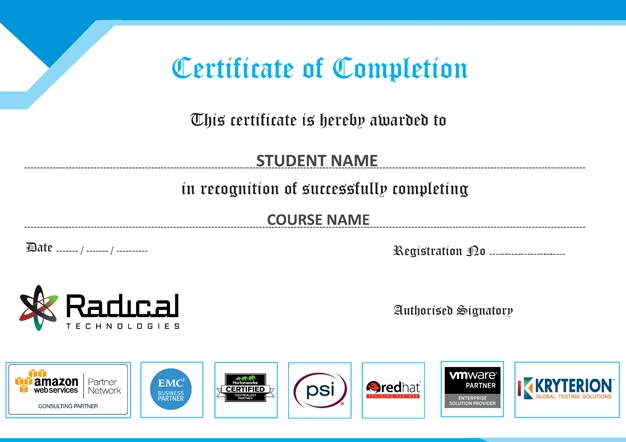


At Radical Technologies, we are committed to your success beyond the classroom. Our 100% Job Assistance program ensures that you are not only equipped with industry-relevant skills but also guided through the job placement process. With personalized resume building, interview preparation, and access to our extensive network of hiring partners, we help you take the next step confidently into your IT career. Join us and let your journey to a successful future begin with the right support.
At Radical Technologies, we ensure you’re ready to shine in any interview. Our comprehensive Interview Preparation program includes mock interviews, expert feedback, and tailored coaching sessions to build your confidence. Learn how to effectively communicate your skills, handle technical questions, and make a lasting impression on potential employers. With our guidance, you’ll walk into your interviews prepared and poised for success.
At Radical Technologies, we believe that a strong professional profile is key to standing out in the competitive IT industry. Our Profile Building services are designed to highlight your unique skills and experiences, crafting a resume and LinkedIn profile that resonate with employers. From tailored advice on showcasing your strengths to tips on optimizing your online presence, we provide the tools you need to make a lasting impression. Let us help you build a profile that opens doors to your dream career.


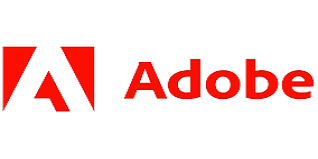





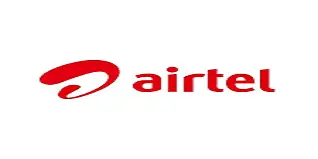
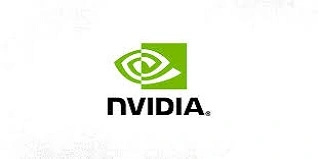



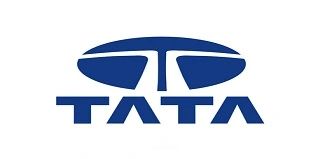
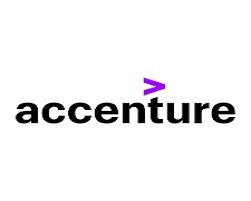
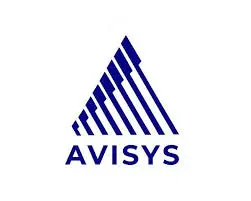
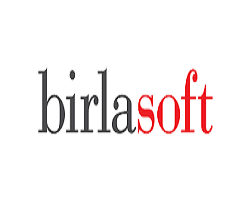
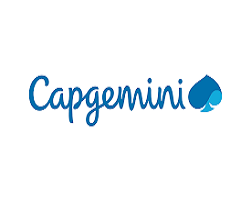
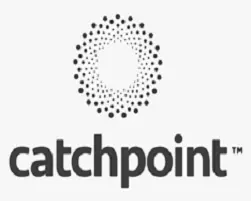
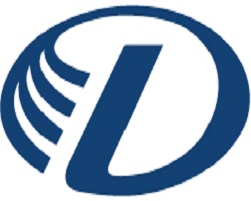


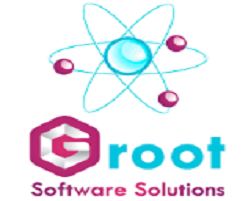
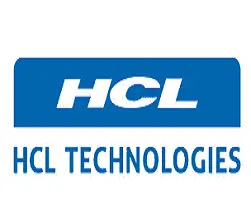
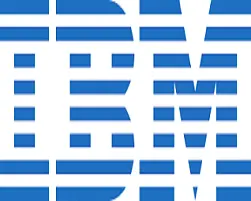
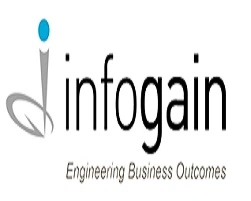
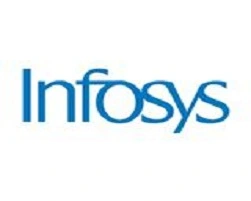
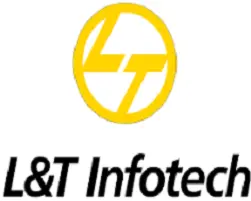
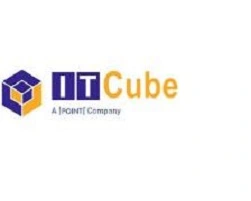
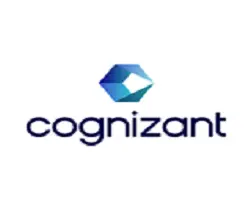
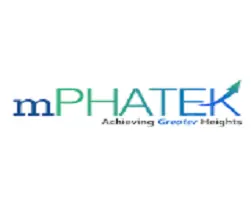
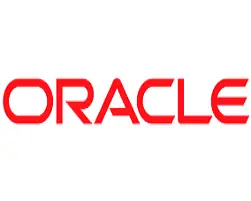

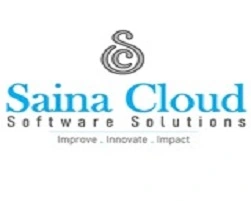

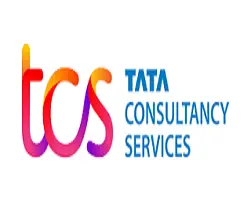
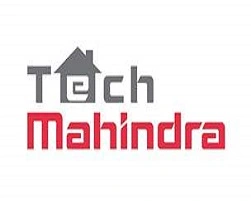

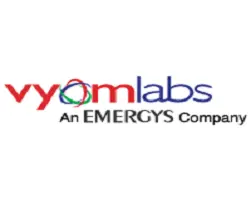
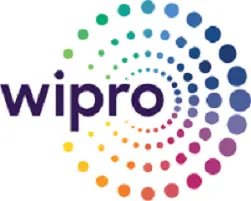
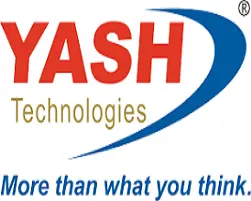
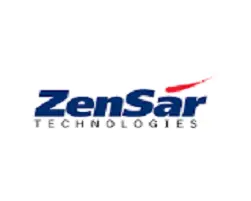
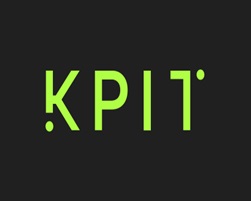
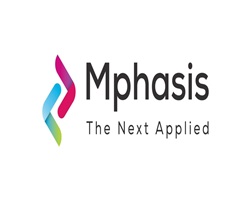
Kochi | Fort Kochi | Mattancherry | Ernakulam | Marine Drive | Kakkanad | Palarivattom | Kadavanthra | Chullikkal | Elamakkara | Kochi Port | Vyttila | Aluva | Thrippunithura | Panampilly Nagar | Edappally | Kothad | Njarackal
At Radical Technologies, we are committed to providing world-class Azure Data Engineer Training in Bangalore, helping aspiring data professionals master the skills needed to excel in the rapidly growing field of cloud data engineering. As the leading institute for Azure Data Engineer Course In Bangalore, we offer comprehensive, hands-on training designed to meet the demands of today’s data-driven organizations.
Our Azure Data Engineer Training Bangalore program covers every aspect of the Azure Data Engineer Syllabus, ensuring that students receive in-depth knowledge of data architecture, data processing, and data storage on Microsoft Azure. Whether you prefer attending classes in-person or via Azure Data Engineer Online Training, Radical Technologies provides flexible learning options to suit your needs.
Our Azure Data Engineering Training is renowned for its practical, real-world approach. Students have access to an industry-leading Azure Data Engineer Bootcamp, which combines theory and hands-on labs to ensure they are fully prepared for their certification exams. The Microsoft Azure Data Engineer Training is tailored to cover all key topics, from data integration to security, and is led by experienced professionals who are experts in their field.
For professionals and organizations seeking Azure Data Engineering Corporate Training, we offer tailored courses that address specific business needs. Our Azure Data Engineering Corporate Training Course ensures that teams gain practical experience in building scalable, secure, and efficient data solutions on Azure.
At Radical Technologies, our Azure Data Engineer Courses are structured to ensure that both beginners and experienced professionals alike can enhance their knowledge. The Azure Data Engineer Certification Training offered here equips students with the skills and credentials needed to stand out in a competitive job market.
Our institute also offers the Azure Data Engineer Full Course, which provides a comprehensive pathway for mastering Azure Data Engineering concepts and techniques. We take pride in being one of the top Azure Data Engineer Institutes in Bangalore, with a proven track record of helping students achieve their Azure Data Engineering Certification.
Whether you are looking for Azure Data Engineer Training Online or prefer our in-person classes in Bangalore, Radical Technologies is your trusted partner for career advancement in data engineering. Join us today to enroll in the Best Azure Data Engineer Course and kick-start your journey towards becoming a certified data engineer.


(Our Team will call you to discuss the Fees)


(Our Team will call you to discuss the Fees)